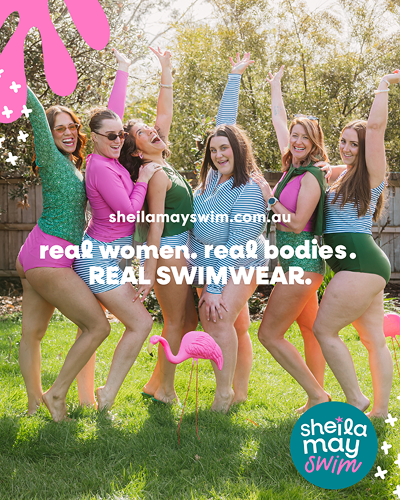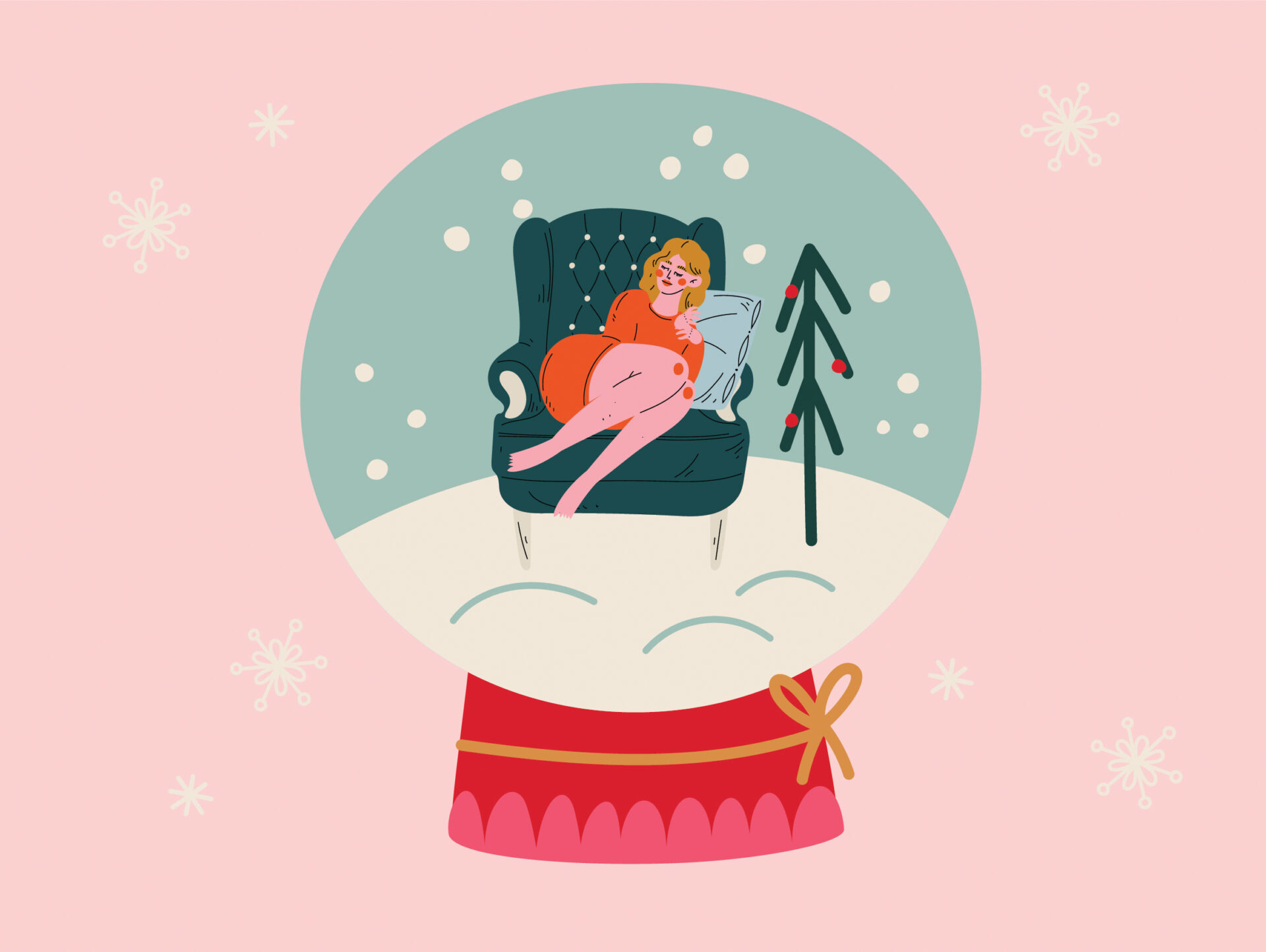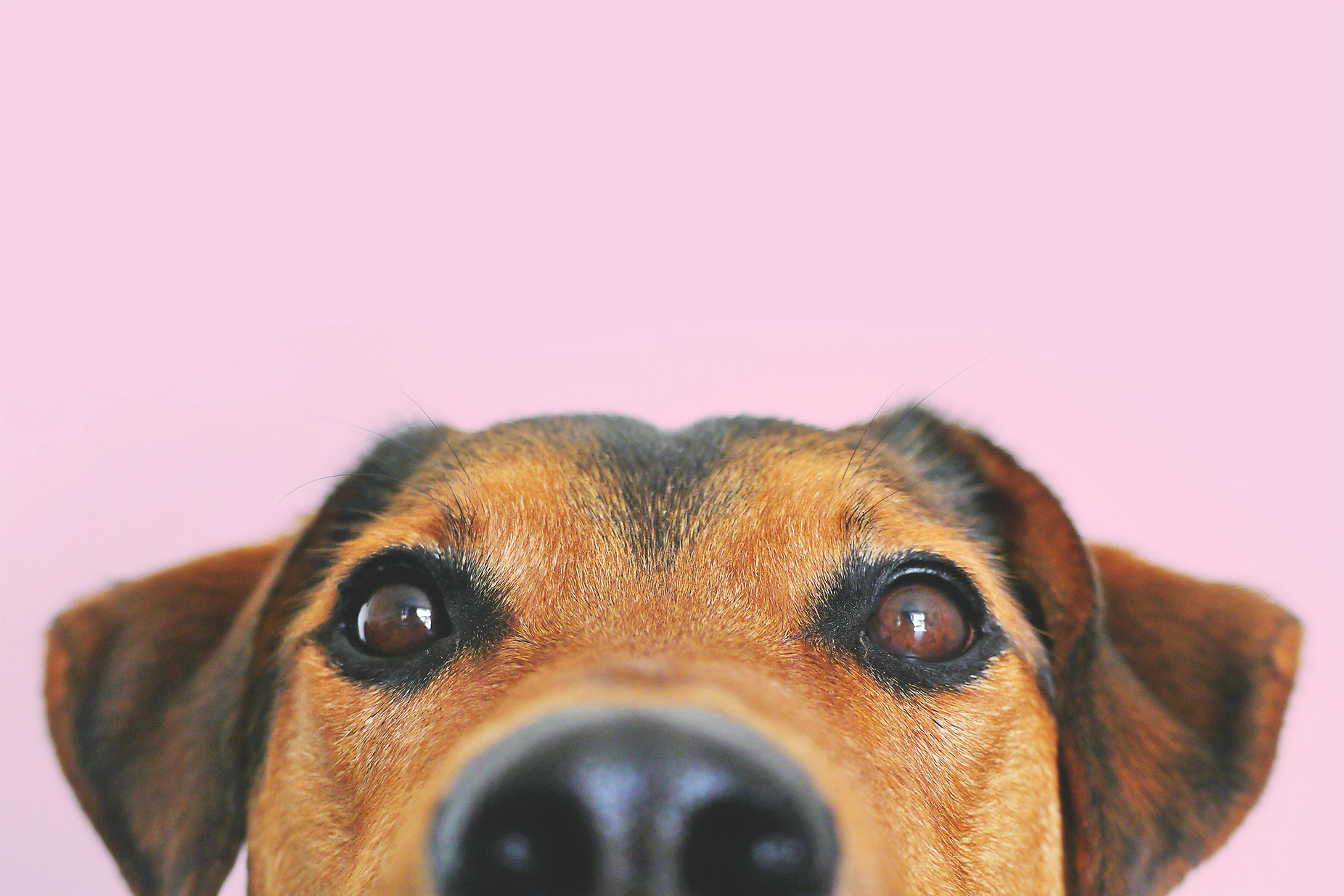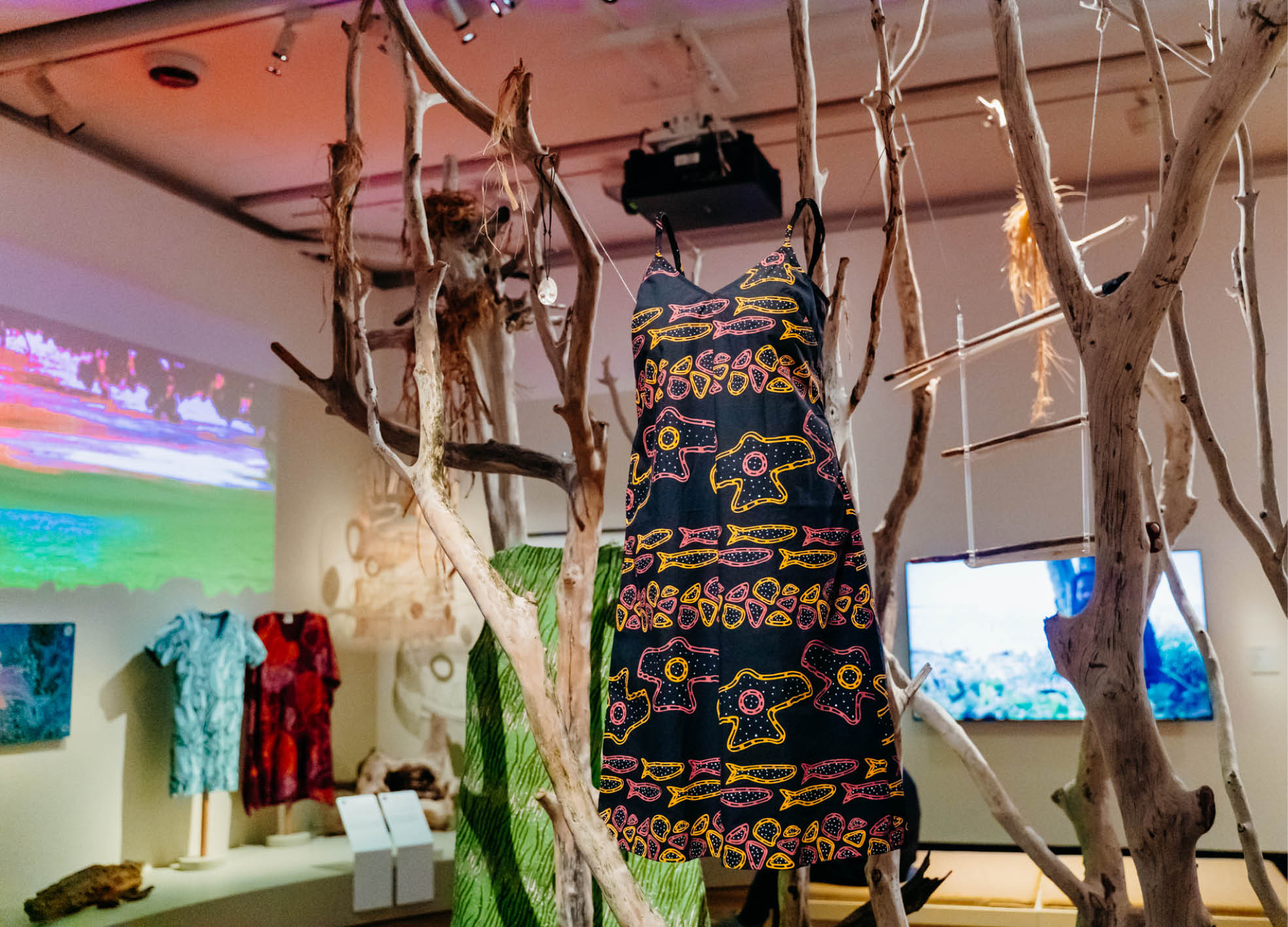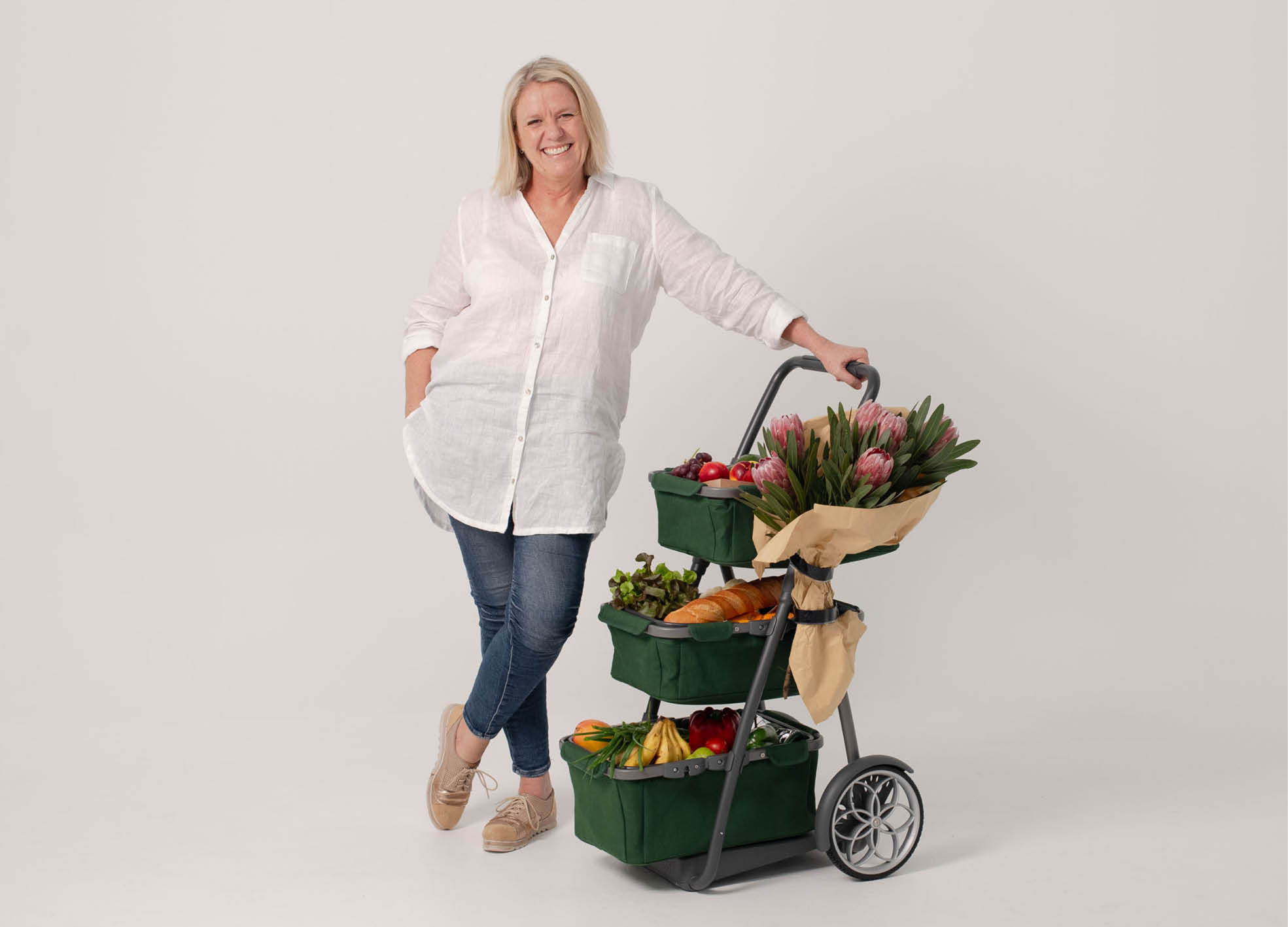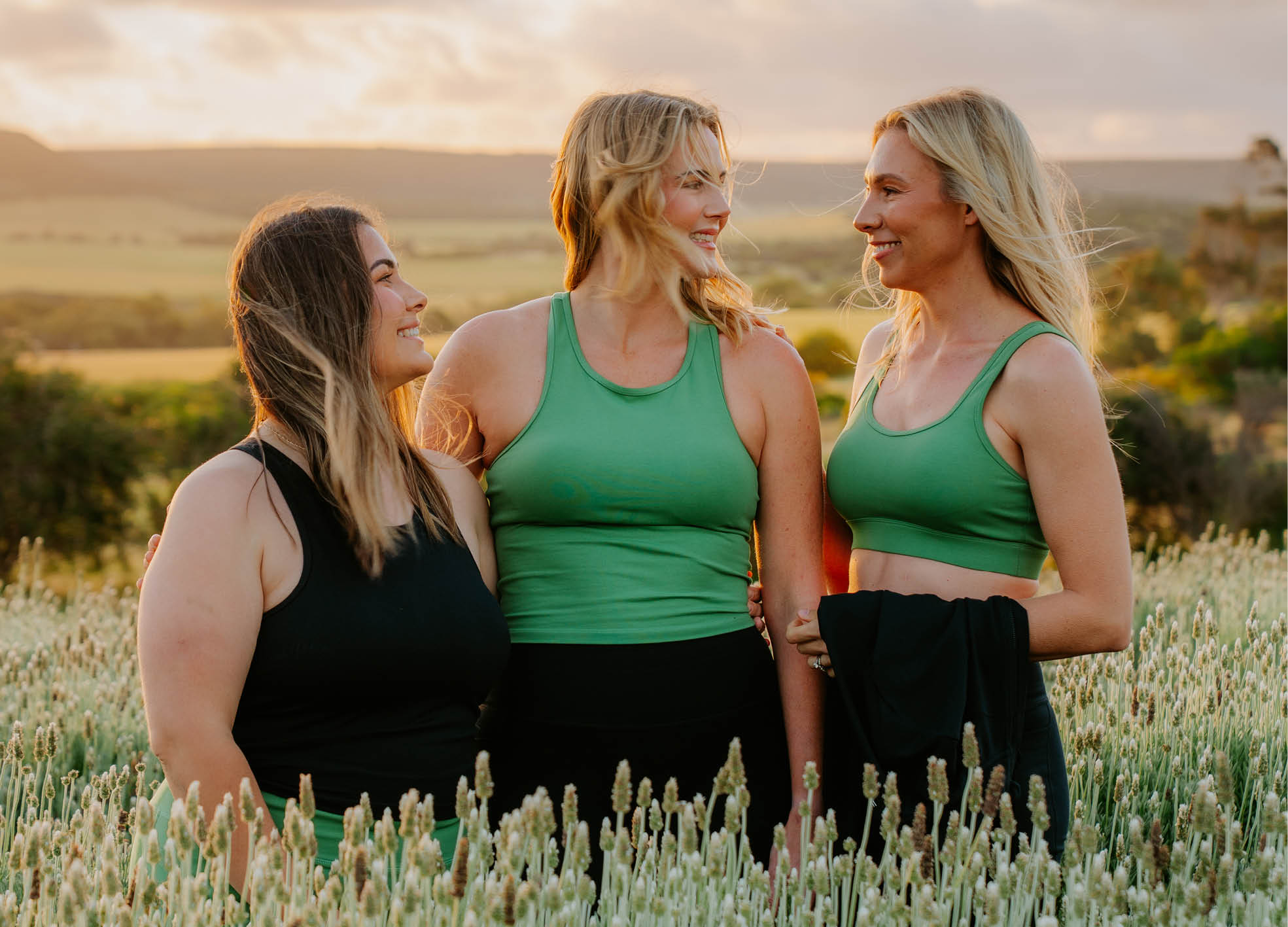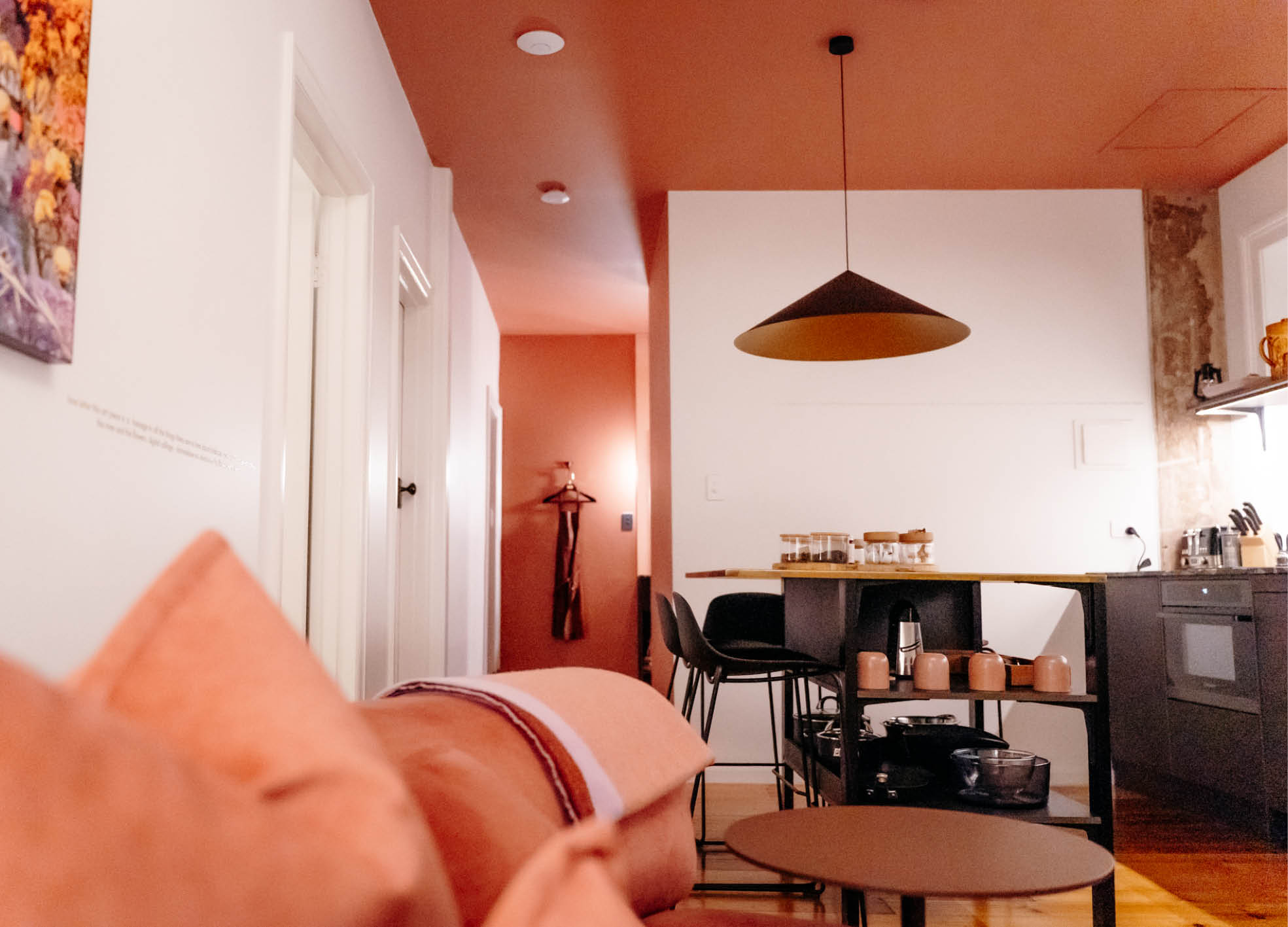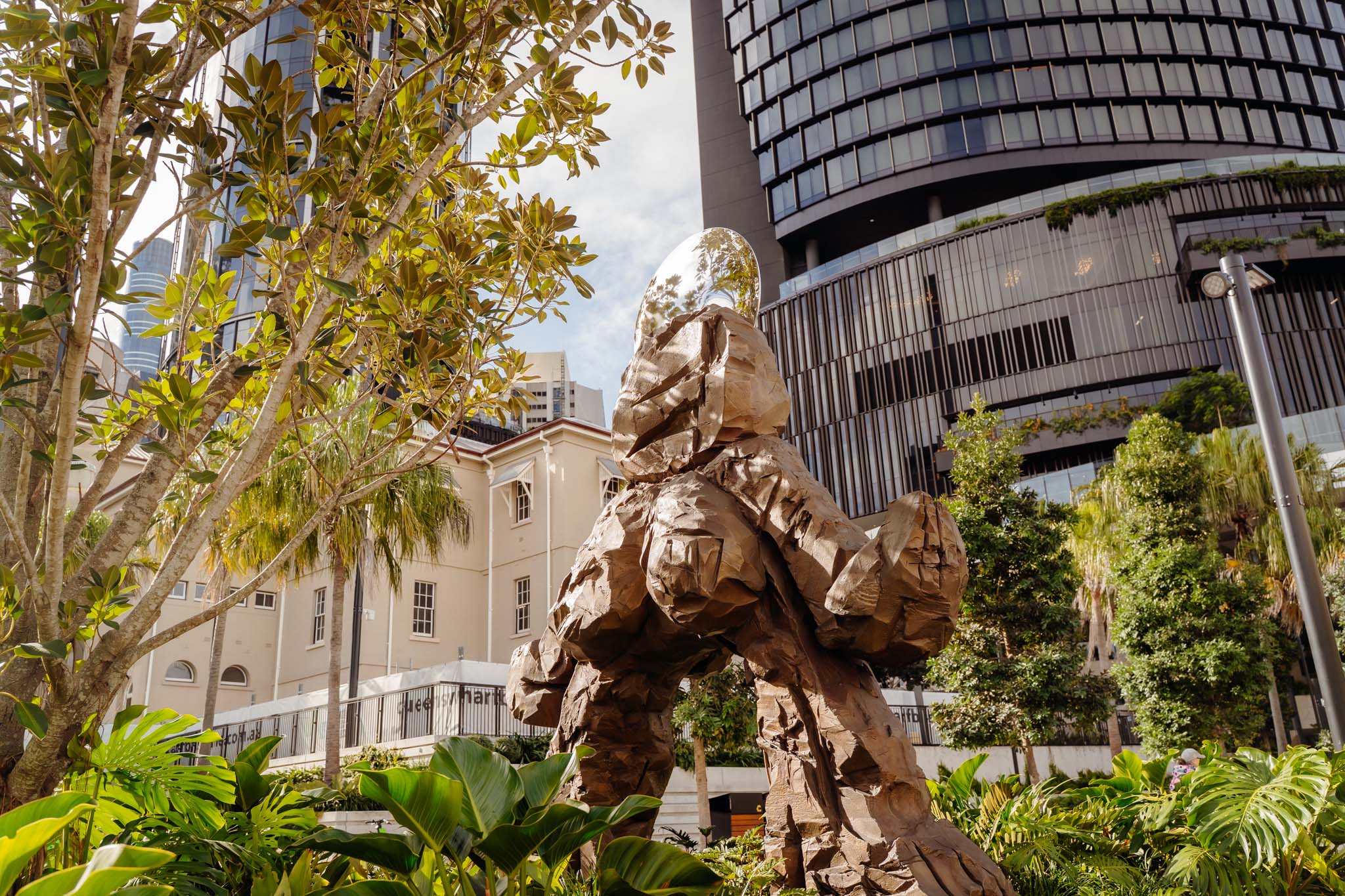Art with Heart: Emily Imeson Digs Deep to Make a Powerful Climate Statement
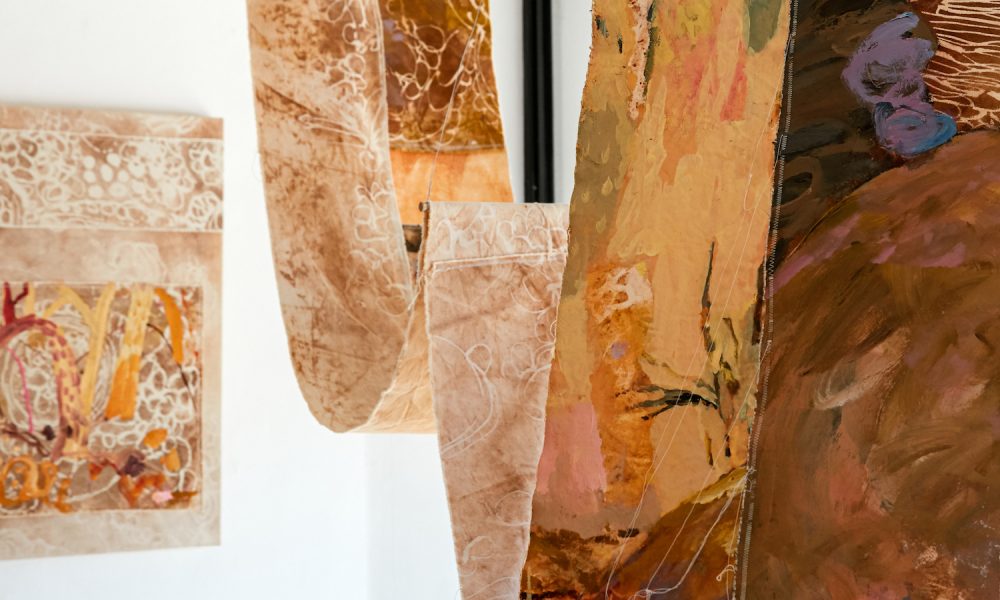
- Words by Peppermint
photos JACQUI TURK
A powerful force for change, art can make a deep and moving impact on our hearts and minds. With so many talented creatives in Australia moving and shaking to make the world a better place – and because Earth without art is just ‘eh’ – we’ve introduced a new digital series called Art with Heart to showcase the superstars in our local art scenes.
Through her work, Australian artist Emily Imeson explores how landscape painting can be a tool to respond to the climate crisis – examining human and non-human relationships with the landscape and encouraging her audience to reflect on the impact humanity has on its surroundings. Recently announced as the 2022 winner of the prestigious Paddington Art Prize, her latest exhibition Chaos and Compassion (In a Time Like This) – showing at Saint Cloche in Sydney until 20 November – saw Emily burying her painted canvas scrolls in the earth.

How did you come to be an artist?
I have always been interested in the world and wondered how I could express this and the things which exceed words. The exploration of materials is, for me, a great way to translate that wonder. In 2010, I was encouraged by my folks to study art and after completing a diploma, I decided to completely dedicate myself to a creative practice.
Tell us about your creative process…
My process is open to change and exploration. I don’t follow rules but find myself content to spend endless hours painting, reading, thinking and being outside. Works are generated from experiences and fuelled by my interest in the interactions between humans and non-humans, between artists and the world.
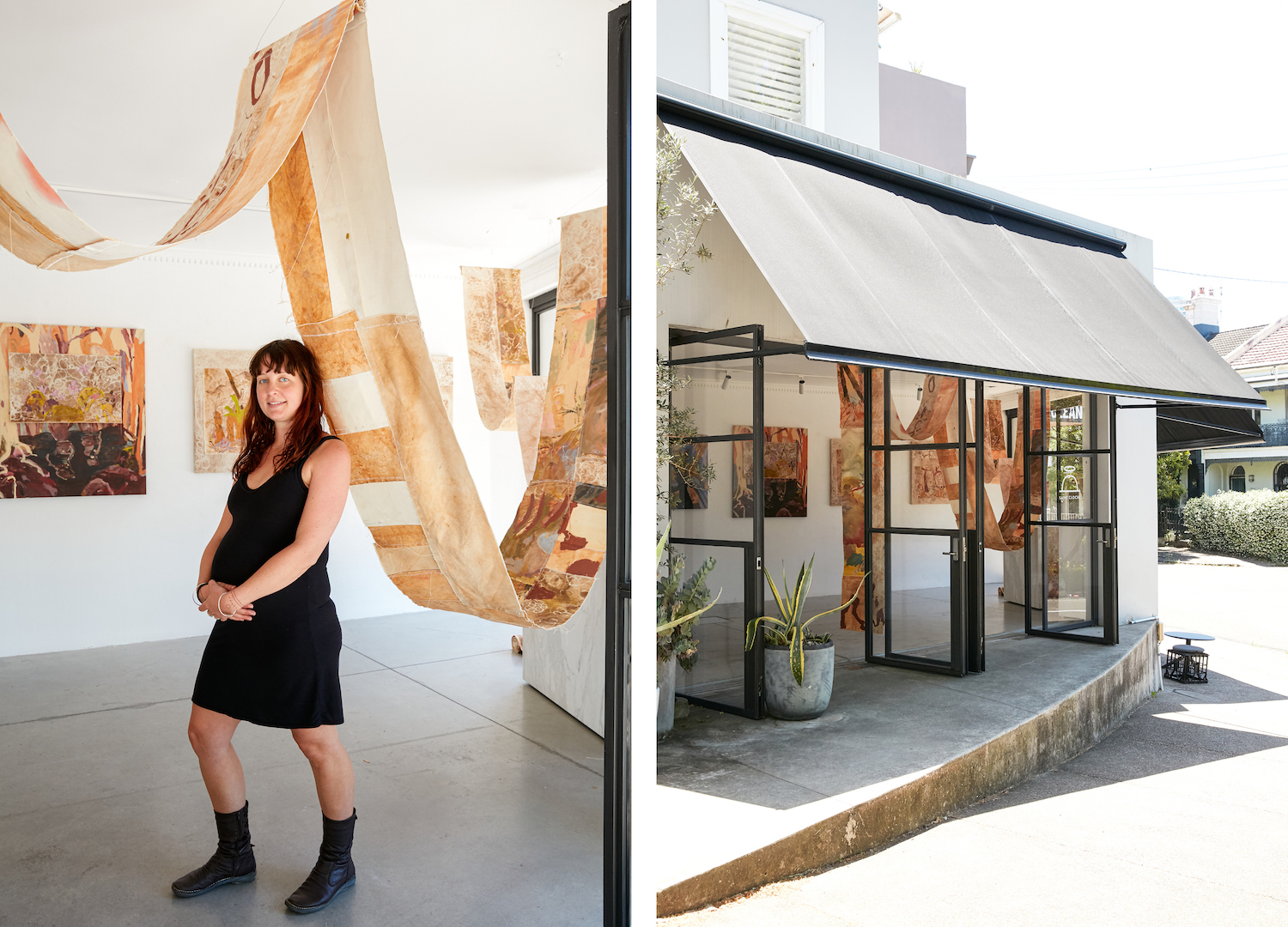

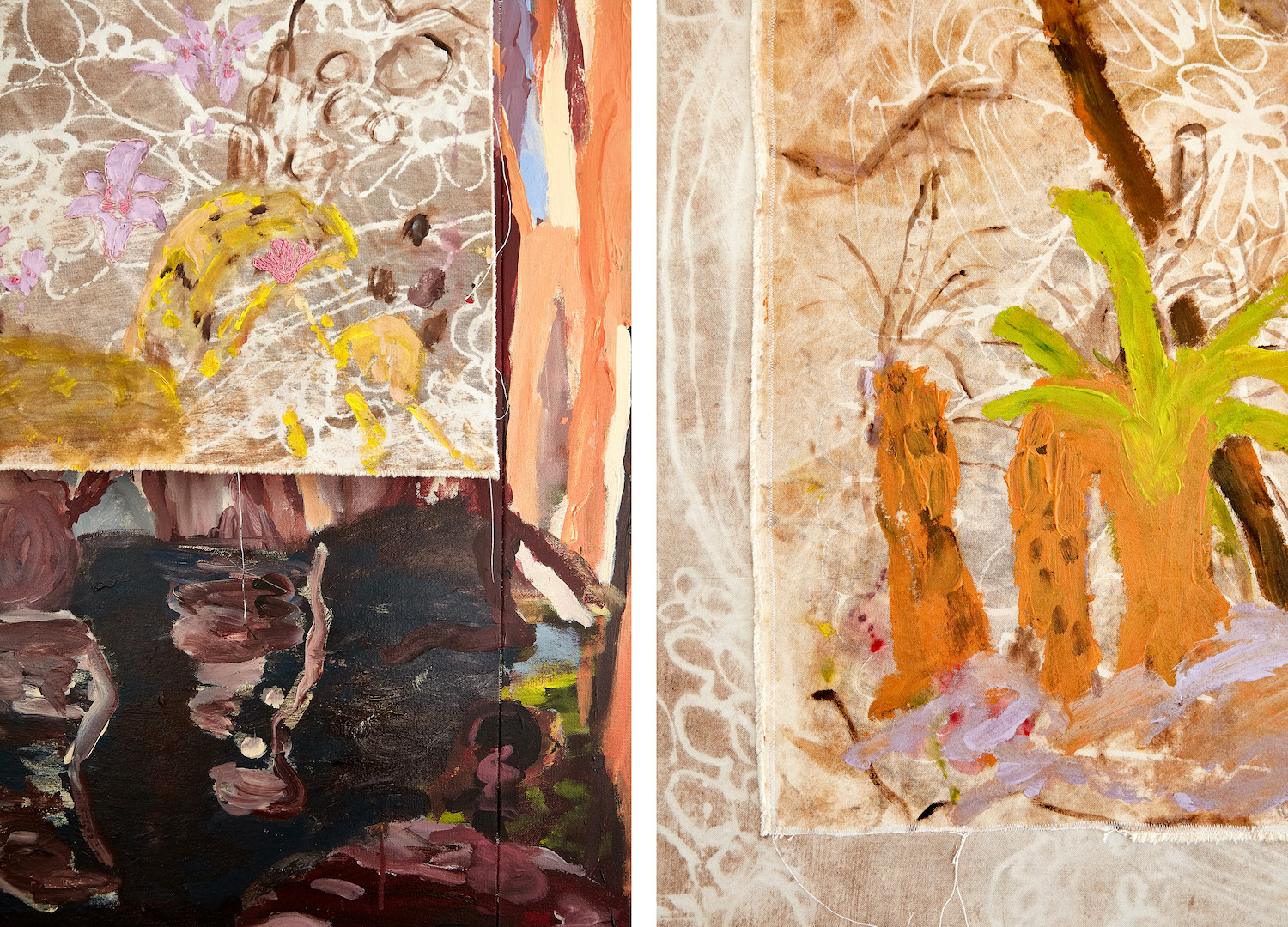
Where do you find inspiration?
Being outside, reading, gardening, seeing art, thinking, talking, cooking, camping, sharing, painting.
I don’t follow rules but find myself content to spend endless hours painting, reading, thinking and being outside.
What draws you to soil?
There are so many great things about soil: we have evolved alongside it; it houses a microbe that has been shown to have an antidepressant effect; it is involved in so many life-sustaining processes (many of which we struggle to comprehend). It is the unseen world that makes our world function. Soil is ‘living dirt’ – it is a site for interconnectedness, a place driven by symbiosis and full of potential. As soil is the greatest store of carbon, I see it as a generator of optimism when faced with concerns about our global ecological future.
The mysteries of this underworld encourage an acceptance of the unknown, which has influenced my application of paint – my mark-making became ambiguous and open-ended, an exploration and an imagining of the worlds beneath our feet. I believe an imagining of healthy soil and compassionate acts towards conserving and generating healthy soil can positively contribute to our ecological problems and encourage a rethinking of how we have treated and how we treat the soil.
READ MORE – ART WITH HEART: OVER THE RAINBOW WITH HIROMI TANGO
Why do you think art is important to society?
Art can be a great instigator of conversations, including ones that are difficult to approach. It can be a useful, non-violent way to discuss overwhelming issues that we face in contemporary society.
What are you working on currently that excites you?
The direction my practice is taking is very exciting for me. My marks feel alive; I’m happy to leave things indefinable; I’m enthralled by working with soil and enjoy finding ways to combine disparate materials to speak of my concepts. Soil, compost and fungi, alongside combinations of gestural and gentle painting, excite me.
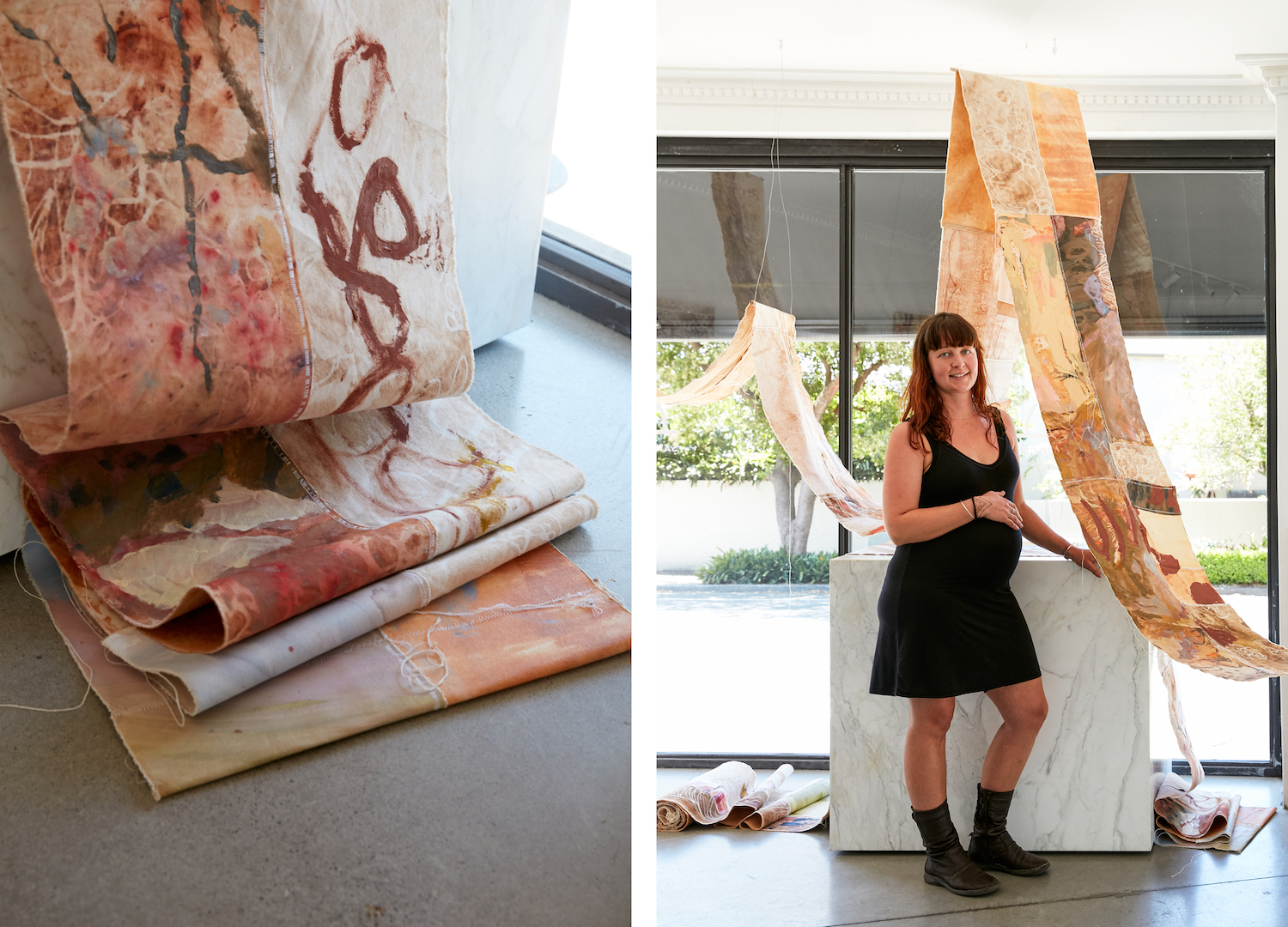
What would be your dream project?
To learn alongside experts working on conservation projects, creating works on-site in response to the experience.
Has your practice changed over time?
Change, as I understand it, is inevitable. This year has been mammoth in terms of change – physically, mentally, ecologically and geographically. I am grateful to have had my practice during this period and I am sure that if I resisted the change (or should we say evolution?) within my practice, it would have been much harder to accept the changes happening in my world and the world around me.
WANT MORE ART CONTENT? RIGHT THIS WAY
JOIN OUR MAILING LIST
Brighten up your inbox with our not-too-frequent emails featuring Peppermint-related news, events, competitions and more!
explore
More articles
When you hang a painting on a wall, the story stays put. But when you wear a beautifully made garment that may as well be a piece of art? The story travels. It moves through the world with you –…
We all do it: fire up the car for a 5-minute drive to pick up groceries, drop off sewing supplies, or run a quick errand…
Here’s a question: who decided that natural fibres aren’t a great fit in activewear? For Geraldton mum-of-four Jade Payne, that question became paramount after a…
Fancy a getaway in a heritage building that was once a hospital, an orphanage AND a school in a previous life? Despite what your initial…
When the algorithm gods reward dance trends over hand-thrown ceramics, and building a website feels more stressful than a tax return, where’s a maker to…
Time-travelling lungfish floating in a mosaic of glass tiles, a four-breasted female empowerment goddess cast in bronze, and a striking botanical sculpture spanning 15 metres,…
Hang out with us on Instagram
“Crafting is something that has come naturally since I was small and I just haven’t stopped. When I was smaller, I was interested in the end result. As I’ve gotten older, I realise it’s the process that keeps me coming back to craft. It’s a meditative state for me and I find the repetitive action of the stitching and felting quite therapeutic.”
Craving a world filled with warmth and whimsy? It’s all in a day’s work for textile artist @Cat_Rabbit, whose latest book, ‘Trinkets’, is bursting with felty food friends to make and cherish. Cat invited us into her universe, filled with cheeky characters, layered storytelling and loads of humour.
Plus: try the super sweet pattern for Cat’s Lucky Pickle, perfect to make as a stocking stuffer, extracted from Trinkets.
Read more from our ‘Just felt right’ feature in Issue 64, at newsagents and stockists now!
Photos: Tatanja Ross @On_JacksonStreet and Cat Rabbit
#PeppermintMagazine #CatRabbit #LuckyPickle #Craft #Crafting #Felting #FeltCrafts #Trinkets #ChristmasDecorations

Our hearts go out to everyone impacted by the Bondi Beach violence, especially the Jewish community. Also to the beachgoers, those who bravely helped and the first responders.
While it`s easy – and understandable – to get caught up in the horror of it all and direct anger at certain groups, remember this quote from teacher and author Erin Gruwell: "Don`t let the actions of a few determine the way you feel about an entire group."
“You don`t fight racism with racism. You fight racism with solidarity," said Bobby Seale of the Black Panthers. And solidarity is exactly what we need right now.
If you are feeling overwhelmed, you are not alone. Remember there is much more kindness in the world than hate. ❤️🩹
@LifelineAustralia has created a Bondi Beach Incident: Wellbeing support guide, where you’ll find information about common reactions, reassurance that what you’re feeling is valid, and ideas for taking care of your wellbeing.
https://lifeline.org.au/bondi-incident
You can also call Lifeline on 13 11 14, text on 0477 13 11 14 or chat at lifeline.org.au/crisis-chat anytime, no matter how this has impacted you.
@BeyondBlueOfficial is also available with free 24/7 support by phone on 1300 22 4636 or webchat at https://www.beyondblue.org.au/
Register.Find.Reunite. has been activated by @RedCrossAu to help people reconnect with family and friends. Visit redcross.org.au to access the service.
@NSWPolice Public Information and Inquiry Centre (PIIC) is operating 24/7 on 1800 227 228 for information relating to people impacted.
@LifeBloodAu is supporting Sydney hospitals. O- and O+ blood are always in high demand in emergencies. To donate (from anywhere in Australia – all states are welcome and helpful!) call 13 14 95 or use the Lifeblood app.

Just a reminder… from @SugarHouseCeramicCo
This holiday season be kind, patient and shop local!
#ShopSmall #ShopLocal #SupportSmallBusiness

✨️ Our website is getting a glow-up! ✨️
Sorry for the inconvenience but it will be offline for a few days. You can still purchase subscriptions (perfect for chrissy presents!) via the links on the holding page.
Last year we were extremely excited to receive funding from the Meta Australian News Fund, in partnership with the Walkley Foundation. The result of this is a fabulous new website, with a sustainable fashion and sewing directory that will follow early next year. We`ve worked with the lovely Amy and Jenny at @CrumpetClubHouse who have been making the magic happen – we can`t wait to show you the outcome! ✨️
In the meantime, please get in touch if you need help with anything – hello@peppermintmag.com
We`ll see you on the other side! 🌈

🎀 12 DAYS OF XMAS GIVEAWAYS 🎀
🎄On the 12th day of Christmas, we’re giving away… a GREENPAN FROST ICE CREAM & FROZEN DRINK MAKER! 🎄
Ice, ice, baby! Calling all kitchen magicians and dessert devotees: it’s time to churn, blend and devour your way to frozen heaven. It’s our final giveaway – and hoo girl, it’s a goodie! Thanks to the clever folks at @TheOriginalGreenPan.Anz, one reader will cool their mitts on the Frost Ice Cream & Frozen Drink Maker – perfect for conjuring up home-made gelato, sorbet, smoothies, slushies and more!
Valued at $599, the Frost Ice Cream & Frozen Drink Maker is designed with GreenPan’s signature Thermolon™ ceramic non-stick coating, so you can whip up summer-ready sweet treats free of PFAS, PFOA, lead and cadmium.
To snag this frosty prize, follow @TheOriginalGreenPan.Anz and tag a friend in the comments below before midday AEST 15 December! (Australian and New Zealand addresses only, please.) Good luck!
Update: The lucky winner of our final giveaway is @just__for__van - congrats! We`ll dm to get your details. Well done! 🎉
#PeppermintMagazine #12DaysOfChristmas #12DaysOfGiveaways #GreenPan

Oh hey 👋🏼 Just a little reminder that our subscriptions are sent in paper envelopes, which is a bit of a rarity in our industry. 💅🏼
If you need more reasons to subscribe, how about these:
💌 Enjoy a new issue arriving in your letterbox every six months.
💌 Subscribers exclusively receive FOUR digital sewing patterns per year!
💌 You’ll be the first to get your hands (and needles) on our patterns with early access.
💌 Get a 20% discount code on back issues of Peppermint so you can start your collection today!
💌 Automatically go in the draw to win amazing prizes each issue.
💌 Feel good about your subscription arriving in plastic-free postage.
💌 Support a small, women-led Australian business.
💌 Help us make the world a better place!
And... it`s a perfect Christmas present! We have a downloadable card you can print to go with your gift.
💌 Link in bio!
#PeppermintMagazine #SupportSmallBusiness #ShopLocal #ShopSustainable #PlasticFree



